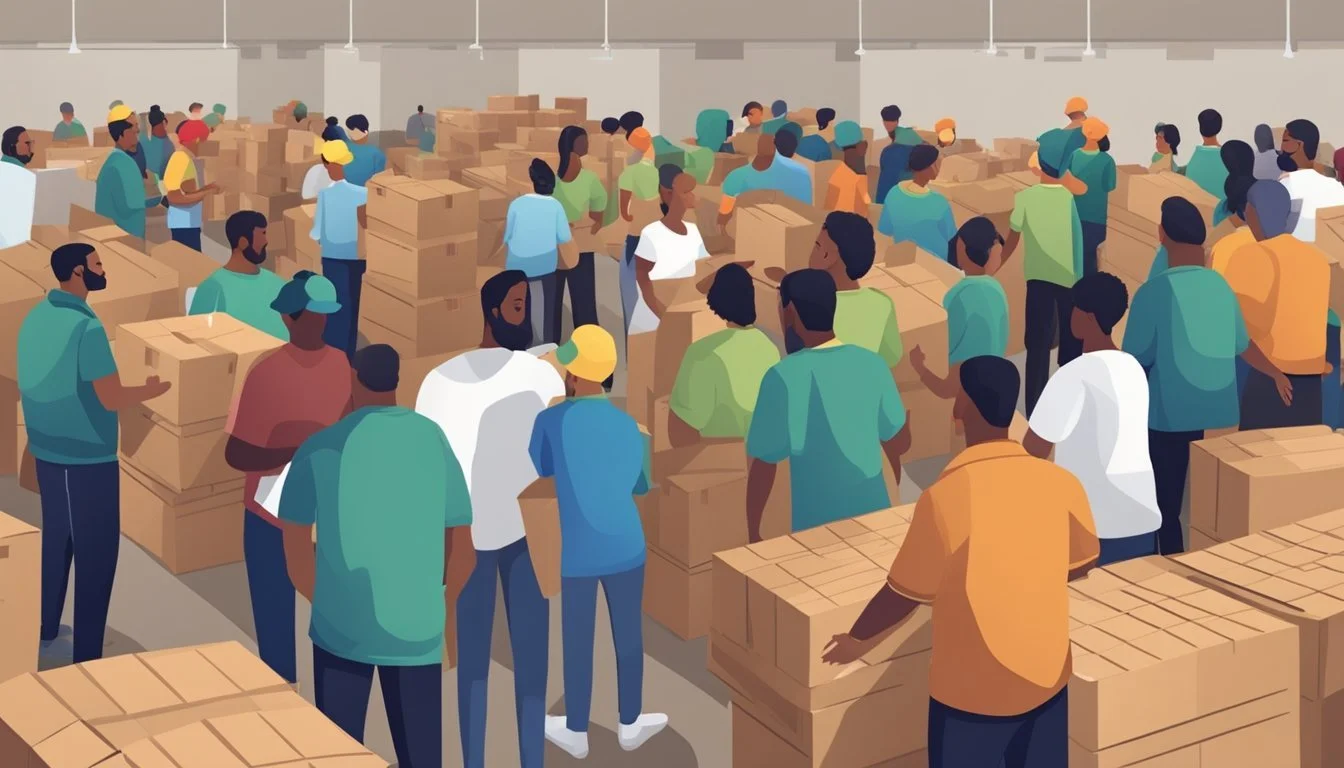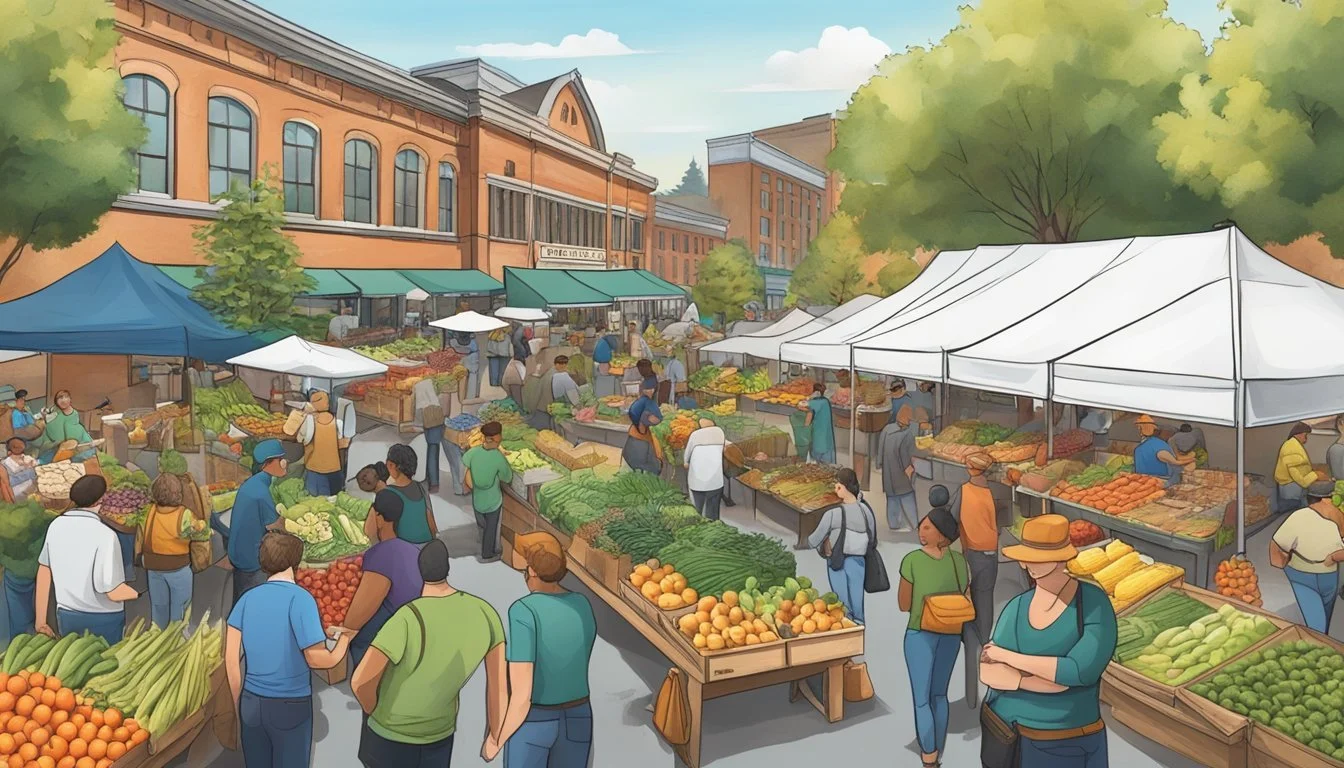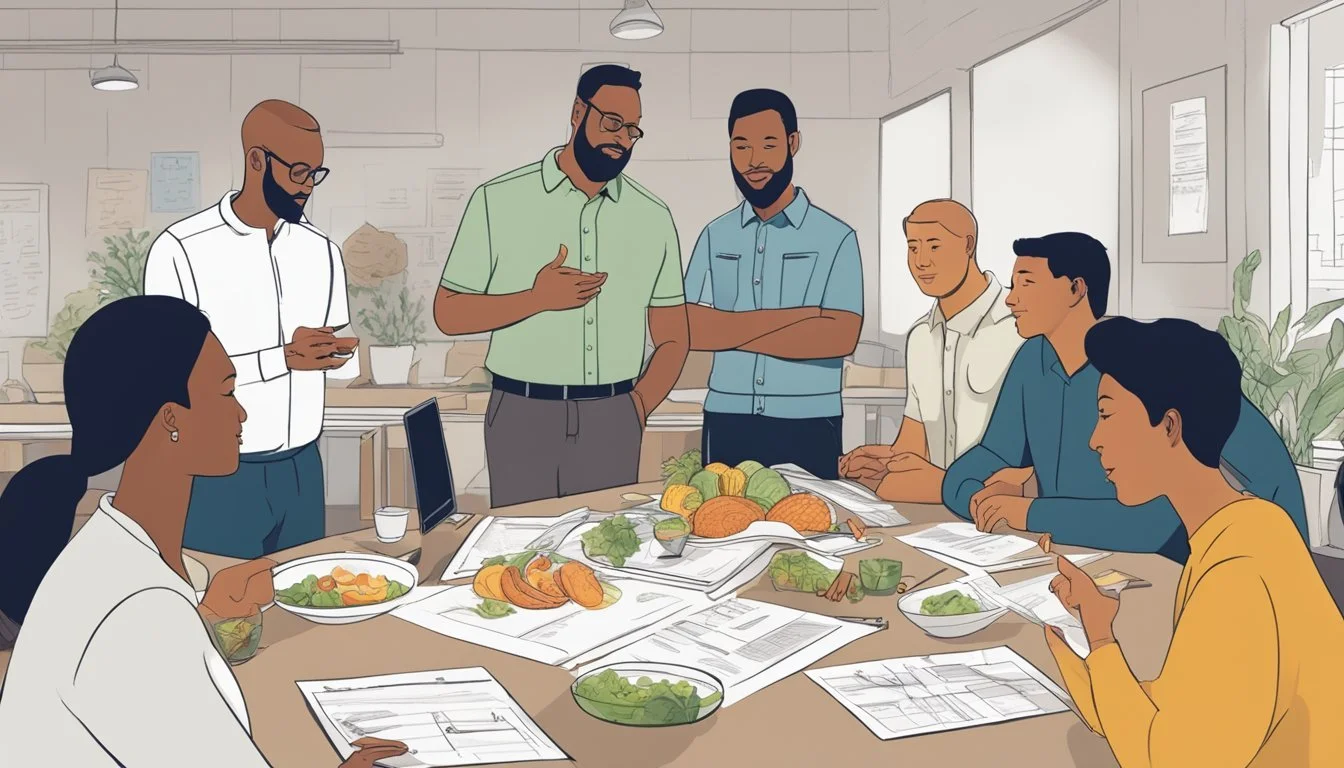Oregon Food Challenges
A Guide to the State's Ultimate Culinary Tests
Oregon boasts a diverse and vibrant culinary scene, known not only for its farm-to-table ethos but also for its range of eating challenges that offer both local and visiting food enthusiasts an opportunity to test their mettle. From gargantuan steaks to towering burger stacks, these challenges are designed to push the limits of appetite and endurance. The state's reputation for quirky and over-the-top food experiences draws participants keen to join the ranks of those who have conquered some of the most daunting meals on offer.
Not for the faint of heart, these food challenges are scattered throughout Oregon's eateries, each with its own set of rules and rewards. Establishments like Sayler's Old Country Kitchen invite daring diners to polish off a 72-ounce steak, while other venues might challenge patrons to devour massive doughnuts or face a mountain of fries. Success often brings the prize of the meal on the house and local acclaim, along with occasional bonus perks such as gift certificates or a photo on the wall of fame.
Whether it’s just for fun, for the glory, or simply to enjoy some good, albeit oversized, food, Oregon's food challenges embody the state's playful spirit and love for community gatherings. Each challenge provides a glimpse into Oregon's food culture, where the experiences created around food are just as important as the cuisine itself. These culinary contests continue to draw crowds, eager to watch as contestants attempt to tackle these Herculean portions.
Overview of Oregon Food Challenges
Oregon faces several food challenges that span from food insecurity to the struggle for a balance between unhealthy and healthy options. In recent years, particularly after the onset of the pandemic, food insecurity has escalated. Statistics reveal that at one time, one in four Oregonians were food insecure, grappling with access to adequate food.
While progress was made pre-pandemic, with food insecurity rates showing a decline, the recent increase has put pressure back on individuals and food assistance programs alike. The Oregon Food Bank and its network have distributed significant amounts of food to meet this demand, indicating the scale of the crisis.
Amidst the pandemic, the concept of food justice has also come to light, underscoring the need to go beyond short-term aid and work towards sustainable solutions. Stakeholders are advocating for systemic changes to address not only hunger but also the nutritional quality of food available to Oregonians.
In terms of nutrition, there is a considerable challenge around the proliferation of unhealthy food choices, which are often more accessible and affordable than healthy alternatives. This imbalance contributes to broader public health issues, such as obesity and chronic diseases.
Efforts are ongoing to tackle these challenges, with government and non-profit organizations working to enhance the food system, whether it's through direct support or fostering a culture of healthy eating and lifestyle. This includes programs that intersect with sport activities to promote overall wellbeing. The commitment to combating food-related concerns in Oregon remains strong, highlighting both the complexities and the collaborative spirit required to navigate this landscape.
Historical Context of Hunger in Oregon
Hunger and food insecurity have long been concerns in Oregon, impacting a broad range of communities. In recent years, reports like the Short History of Oregon and U.S. Food Insecurity have indicated varying rates of hunger, with significant disparities among low-income residents, people of color, native people, Hispanics, Asian Americans, and white populations.
The efforts of the Oregon Food Bank have been crucial, working alongside the Oregon Hunger Task Force to tackle the root causes of hunger. These organizations have been instrumental in sourcing and distributing large quantities of food to those in need.
Food Insecurity Statistics:
Pre-COVID-19 Trends: Declining rates of hunger.
Post-Pandemic: An increase in food insecurity.
Racial and Ethnic Disparities: Higher rates of insecurity among minority groups.
Data from the U.S. Census Bureau has shown fluctuation in Oregon's food insecurity levels, with the state once surpassing the national average. In contrast, substantial progress was observed prior to the pandemic, with rates falling below the U.S. average.
Despite historical challenges, Oregon's dedicated networks continue to address food insecurity, leveraging not only federal and state support but also community involvement to ensure accessibility and support for all residents, particularly the most vulnerable populations.
Food Assistance Programs
The landscape of food assistance in Oregon encompasses a variety of programs aimed at addressing food insecurity, ranging from emergency food distributions to services targeted at specific populations. These initiatives are supported by collaborations between state entities, nonprofit organizations, and community volunteers.
Statewide Emergency Food Assistance
In response to increased demand, emergency food assistance in Oregon has expanded. The Oregon Food Bank has distributed over 104 million pounds of food to support meal sites and food pantries across the state. This includes both rural and urban areas where residents face challenges accessing food.
Targeted Support Services
Dedicated programs focus on populations like single mothers and students. The Student Emergency Needs Package offers resources covering basic needs like food, textbooks, and living expenses. The Child and Adult Care Food Program supports food costs in child care, adult day care, and emergency shelters.
Assistance for Rural and Underserved Areas
Oregon's rural areas often require specific attention due to transportation and funding challenges. Programs like the Oregon Hunger Task Force work to address the urban-rural divide in food assistance, ensuring that regional food banks and pantries receive adequate supply to serve their communities.
Food Programs for Vulnerable Populations
Initiatives directed at people of color, Native people, and Hispanics aim to offer culturally relevant support through food assistance programs. These focus on both emergency and ongoing nutrition needs, while being mindful of the barriers these communities may face in accessing aid.
Benefits and SNAP Access
SNAP, a crucial resource for many Oregonians, has specific federal requirements. Assistance programs strive to ensure that eligible residents can navigate the application process and receive the benefits they're entitled to, which helps cover food costs.
Volunteer Opportunities and Donations
The enduring efforts of volunteers and the generosity of donors are vital for the sustainability of food assistance programs. Opportunities to volunteer or donate are abundant, with many food pantries and emergency food assistance programs depending on community support to maintain services like free meal markets and delivery programs.
Cultural and Competitive Eating Events
Oregon's food scene boasts a thrilling array of cultural and competitive eating events, ranging from towering burger challenges to fiery hot wing contests. These events not only test the mettle of participants but also highlight the state's diverse cuisine.
Famous Oregon Food Challenges
Tex-Ass Challenge: A gastronomic feat that attracts the brave and the hungry, the Tex-Ass Challenge at Voodoo Doughnut consists of a mammoth donut equivalent to six regular-sized doughnuts. Adventurers must devour this sizable pastry in 80 seconds or less to claim victory.
15 Hot Wings Challenge: Participants can experience intense heat at Fire on the Mountain, where bold competitors aim to finish 15 of their spiciest wings. This challenge is not only a test of speed but also of one's ability to handle escalating levels of spice.
Local Food Challenge Hotspots
Adam's Rib Smokehouse: In Salem, the Adam's Rib Smokehouse offers a meat-lover's dream with its formidable Dark Knight Burger. It's a smoky behemoth that invites patrons to tackle a substantial sandwich stacked with patties and brisket.
Heroes Tap House: Also in Salem, Heroes Tap House rises to the challenge with its heroic Goliath Burger, a colossal feat of multiple beef patties, cheese, and a myriad of toppings, all sandwiched between oversized buns.
In Southern Oregon, food enthusiasts can face the Goliath of pizzas at various local eateries offering the giant pizza challenge, which is a daunting task for even the most ravenous of teams.
China Blue in downtown Portland presents the fiery trial of their spicy wings. Each competitor must navigate through this incendiary dish, balancing heat and flavor to earn a spot in the local legends.
Competitive eating in Oregon transcends mere sport—it becomes a spectacle emphasizing local flavors, community engagement, and the extremes of human culinary endurance.
Health and Nutrition
In Oregon, the contrast between healthy eating habits and unhealthy choices is sharply magnified by the presence of food challenges. These challenges are compounded by economic disparities and access issues, leading to a rise in food insecurity. Notably, households without adequate access to nutritious foods may experience adverse health outcomes, necessitating various forms of food assistance.
Healthy Choices:
Access to fresh fruits, vegetables, and whole grains
Promotion of balanced diets and regular physical activity
Linking of nutritional offerings with Oregon's rich agricultural landscape
Unhealthy Consequences:
Higher likelihood of chronic diseases such as diabetes and heart conditions
Potential for exacerbated mental health challenges
Strain on healthcare systems and resources
Athletic programs and sports associations within the state have recognized the importance of good nutrition as a cornerstone of peak performance. Therefore, they often advocate for high-quality dietary plans for athletes at all levels.
The Oregon Food Bank has been instrumental in addressing these nutritional concerns, distributing over 104 million pounds of food in a fiscal year to those in need. Their collaboration with the Oregon Community Food Systems Network underscores a collective effort to strengthen local and regional food systems for better health outcomes.
Within the academic sphere, institutions like Oregon State University engage in research that highlights the nuanced interplay between socioeconomic factors and dietary habits. Studies reveal that food and nutrition challenges significantly affect individuals’ abilities to lead healthy lives.
Economic Impact of Food Challenges
Food challenges in Oregon, especially those related to insecurity and poverty, have significant economic repercussions that permeate both rural and urban areas, exacerbating the urban-rural divide. The cost of transportation plays a critical role in food distribution, often increasing the cost of food delivery in rural locations and hindering access to nutritious food options.
Funding for food assistance programs is a vital component in addressing food challenges. The Oregon Food Bank, a key player in this fight, experienced an increase in demand, servicing nearly 1.7 million people in 2020 due to the pandemic. This surge reflects heightened levels of food insecurity across the state.
Year
2020
2021
People Served by OFB Network
1.7 million
1.2 million
Food insecurity often dovetails with poverty. Investment in hunger relief stimulates economic activity by providing meals that otherwise would strain families' budgets. However, inadequate funding perpetuates the cycle of hunger and economic decline, impacting productivity and healthcare costs.
Hunger in Oregon not only affects individual wellbeing but also the state's economic sector, particularly agriculture and food production. The decline in consumer purchasing power reduces demand for local produce, thereby affecting farm revenues and food-related businesses. Initiatives addressing food challenges must therefore consider the broad economic impact, focusing on sustainable solutions that strengthen both the food system and Oregon's overall economy.
Advocacy and Future Directions
Advocacy efforts in Oregon have been instrumental in addressing the food challenges faced by various groups, including low-income residents, students, renters, and homeowners. The Oregon Hunger Task Force plays a significant role in shaping legislative actions to combat hunger and food insecurity. Their advocacy is critical, especially considering recent challenges such as the pandemic which exacerbated food scarcity issues.
Targeted Support: The Child and Adult Care Food Program (CACFP) aims to ensure that children and adults receive nourishing meals. This ties into broader educational goals, acknowledging that proper nutrition can help students from kindergarten through to obtaining a high school diploma.
Regional Collaborations: Regional nonprofits are vital in supporting statewide efforts. They provide insights into local needs enabling effective delivery programs that ensure food reaches remote or underserved communities.
Engaging the Community: Donating to food banks remains essential. Collaborative initiatives encourage residents to donate time, resources, or money, reinforcing a community-centered approach to alleviating hunger.
Moving forward, Oregon’s fight against hunger seeks to leverage these foundational elements. Proactive policies aim to tackle root causes and sustain long-term solutions. Key strategies include:
Expanding Access: Enhancing food program accessibility for marginalized groups.
Strengthening Networks: Building robust support systems through partnerships.
Ensuring Sustainability: Promoting policies for continuous support beyond crisis times.
These directions emphasize that food is a basic right, and collective action is necessary to fulfill this right for all Oregonians.








